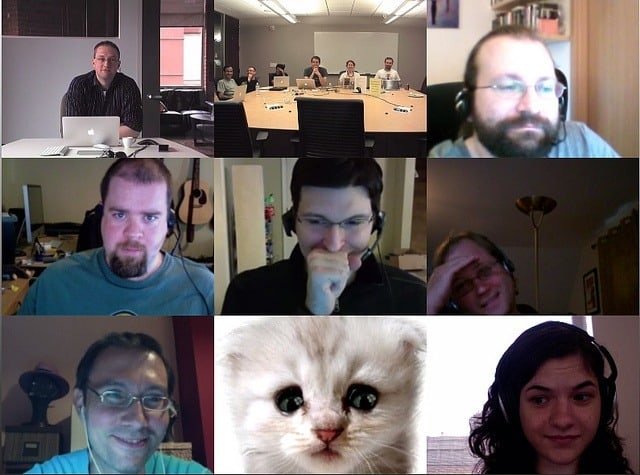When looking to improve workplace morale, collaboration and overall productivity, nothing enhances the efficiency of the modern business like the company meeting. Face time is one of the most important factors in getting things done, crucial for the proper sharing of ideas and information. Creating a greater sense of community and cooperation, regular conferences are necessary for making the plans of today into the successful projects of tomorrow.
What happens when half of your company’s staff works in another location, though? What about employers who have contacts all over the country, or those who employ people from other nations? What can a manager or project director do to bring their staff together when that staff is spread over numerous, remote locations?
The answer is to bring technology into the fold. Using streaming audiovisual services, businesses can gather staff members to collaborate on projects from distances both great and small. With little more than a streaming program downloaded or built into an internet-enabled device, participants can work together at any time of day and see each other face-to-face. There is no need for travel, no need for losing valuable office time or spend company resources to facilitate that travel. With audiovisual conference technology, teamwork is easier than ever before.
What is a Video Conference and How is it Used?
According to Tech Target, a video conference is a live, audio and visual connection between two or more parties. This is one of the easiest ways to transmit data in real time between remote locations, and is being applied to business operations with increasing frequency. The technology ranges from the sending of still images and basic text information to the detailed, live broadcast of real-time imagery and sound. All levels are useful in professional applications, but the most sophisticated are the most helpful and are the go-to for companies who are looking for ways to integrate dialogue and face time into their business plan.
Meetings are important in keeping employees on the same page in regards to rules, regulations, practices and project details. Making these gatherings happen in a society where many employers source their talent from all over the globe can be difficult, which is why so many employers look to audio and video conferencing software to bring people together. Communication companies with a target audience of corporate clients – like BlueJeans – focus on helping these customers sort out the best group video conferencing program to choose for their individual needs.
Finding the Best Calling Service for Your Company’s Needs
Knowing which sort of streaming service best suits the needs of a business can be tricky. What will the company need to use the program for? How many participants will use the program? These are things to consider when looking for the perfect fit for virtual meeting software.
While there are many benefits to any of the programs a business can choose between for audiovisual communication, there are key differences that help with the decision. Sites like CrowdReviews.com help employers and managers to select effective technology and put it to use for their staff. In offering comprehensive reviews of each system and the hardware that goes along with them, corporate entities can make more informed selections and find the programs that will help them the most.

Some things to consider when sorting through the myriad video-hosting sites and applications include the following:
- What will a service be used for? Is this primarily for conferencing and direct interaction between employees and participants, or will there also be promotion and live broadcasts given?
- Can the software be used for education and training purposes as well, adding value to the purchase thereof?
- What types of media and which files types are supported by the program and will be easy to display or send?
- Are their compatible mobile applications and technology that will allow participants to utilize the service from remote locations and on the go, as is often necessary for today’s employers?
These are all factors in selecting the best conferencing software for a company and using the program chosen to the height of its effectiveness. Zapier.com details a long list of these services, what the benefits and drawbacks of each are, their approximate operating cost and overall effectiveness. Making sure that the investment your company makes in this technology will realize a return before parting with your capital is a wise decision, one that many technology blogs and sites seek to facilitate.
Ultimately there are many reasons why a brand might choose to put group video calling to work for their staff, the choice to do so is primarily one made from convenience. Even when a fee is required to use these programs, they cost less than the expenses related to travel and take less time and focus away from on-site work, and are therefore the best resource many companies have to engage with contacts outside of the office. The only matter left to sort out is which of these useful systems they will put to work in their circumstance.

